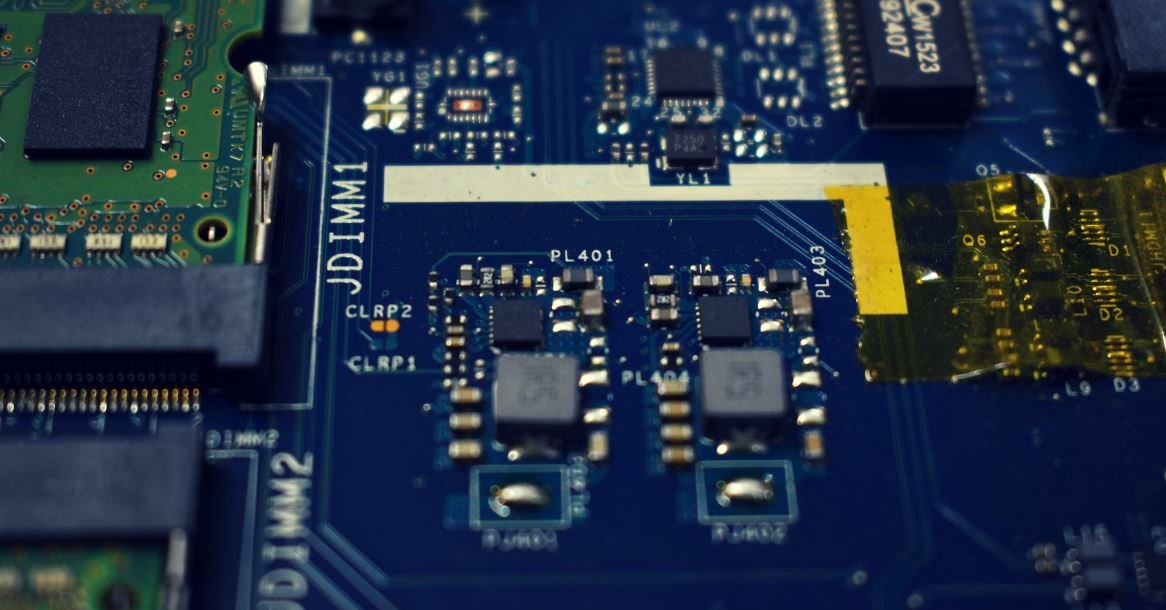Artificial Intelligence Hype
Introduction
Artificial Intelligence (AI) has become one of the most talked-about and hyped-up technologies in recent years. Promising to revolutionize industries and change the way we live and work, AI is surrounded by a mix of excitement and skepticism. In this article, we will explore the current state of AI and evaluate the reality behind the hype.
Key Takeaways
- Artificial Intelligence (AI) is a technology that has been subject to a great deal of hype in recent years.
- AI has the potential to transform industries and improve many aspects of our lives.
- However, the reality of AI currently falls short of the exaggerated claims and expectations.
- It is important to separate the hype from the actual capabilities and limitations of AI.
The Current State of AI
AI refers to the simulation of human intelligence in machines that can perform tasks that typically require human intelligence, such as visual perception, speech recognition, language translation, and problem-solving. While AI has made significant progress in certain domains, such as image recognition and natural language processing, it is still far from achieving general intelligence, which is on par with human capabilities.
The field of AI research and development is continuously evolving, with new breakthroughs and applications emerging regularly.
The Hype versus Reality
AI has generated immense excitement due to its potential applications across various industries, including healthcare, finance, transportation, and entertainment. However, the hype surrounding AI has often exaggerated its current capabilities, leading to unrealistic expectations. Many AI systems today are specialized and narrow in their focus, rather than possessing a broad understanding of the world or general problem-solving abilities.
It is crucial to set realistic expectations and understand the limitations of AI technologies.
Examples of AI Hype
The media and popular culture have contributed to the AI hype, often portraying AI as all-powerful and autonomous machines that will surpass human intelligence. While AI has made significant advancements, particularly in specific domains, it is important to separate the reality from the sensationalized portrayals.
Public understanding of AI relies on accurate representations rather than exaggerated claims.
Table 1: Recent Advances in AI
| AI Application | Description |
|---|---|
| Self-driving cars | AI-powered vehicles that can navigate and drive autonomously |
| Virtual assistants | Intelligent software agents that can perform tasks and answer questions |
| Machine translation | AI systems that can translate languages in real-time |
AI’s Limitations and Challenges
While AI has demonstrated significant potential, there are several challenges and limitations that hinder its progress. AI systems heavily rely on large amounts of high-quality data to learn and make accurate predictions. Additionally, ethical considerations, such as privacy, bias, and transparency, need to be addressed to ensure responsible and fair use of AI technologies.
Overcoming these challenges is essential for the advancement of AI and its successful integration into our society.
Table 2: Common Challenges in AI Development
| Challenge | Description |
|---|---|
| Data availability | Acquiring and labeling large, representative datasets |
| Ethical considerations | Addressing issues related to privacy, bias, and accountability |
| Interpretability | Understanding and explaining how AI systems make decisions |
The Future of AI
Despite the current limitations and challenges, AI continues to be a rapidly evolving field with vast potential. Ongoing research, combined with collaborations between academia, industry, and policymakers, will shape the future of AI. By harnessing the power of AI responsibly and ethically, we can build a future where AI technologies enhance human capabilities and improve various sectors of society.
Table 3: Projected AI Impact on Industries
| Industry | Projected AI Impact |
|---|---|
| Healthcare | Improved diagnostics, personalized treatment, and drug discovery |
| Finance | Automated fraud detection, algorithmic trading, and risk assessment |
| Transportation | Autonomous vehicles, optimized traffic flow, and efficient logistics |
In Summary
The hype surrounding AI should be tempered with a realistic understanding of the technology’s current state and limitations. While AI has immense potential to transform industries and improve our lives, it is essential to separate the hype from reality. By setting realistic expectations, addressing ethical considerations, and advancing research, we can leverage AI’s capabilities responsibly and shape a future where AI enhances human potential.

Common Misconceptions
Misconception 1: AI will replace all human jobs
One common misconception about artificial intelligence is that it will completely replace human jobs. However, the reality is that AI is designed to complement and enhance human capabilities rather than substitute them.
- AI will automate repetitive and mundane tasks, allowing humans to focus on more meaningful and creative work
- AI can augment human decision-making by providing valuable insights and data analysis
- AI technology creates new job opportunities, requiring skills to develop, maintain, and manage AI systems
Misconception 2: AI is infallible and always accurate
Another misconception surrounding artificial intelligence is that it is always infallible and provides accurate results. However, like any technology, AI systems have limitations and can make mistakes.
- AI algorithms rely on data and can be biased if trained on biased data
- AI systems can struggle with context and interpretation, leading to misinterpretations or incorrect conclusions
- AI needs continuous monitoring and oversight to ensure its performance and accuracy
Misconception 3: AI is a threat to humanity
There is a common misconception that AI poses a significant threat to humanity, often fueled by science fiction movies and sensationalized media. However, the fear of AI surpassing human intelligence and turning against us is largely unfounded.
- AI does not have consciousness, emotions, or intentions, making the notion of it turning against humanity unrealistic
- Ethical guidelines and regulations are in place to ensure responsible development and use of AI
- AI is a tool created and controlled by humans, and its purpose is determined by human values and intentions
Misconception 4: AI will solve all problems instantly
Some people believe that AI has the ability to instantly solve all problems and provide immediate solutions. While AI can be powerful, it cannot solve every problem instantaneously.
- AI requires time and resources to learn and improve its performance
- Complex problems often require human domain expertise and context, which AI may not possess
- AI solutions must be implemented and integrated into existing systems, which can take time and effort
Misconception 5: AI will lead to superintelligent machines
One common misconception is that AI will inevitably lead to the creation of superintelligent machines that far surpass human intelligence. While AI advancements are impressive, the development of true artificial general intelligence (AGI) is still a considerable challenge.
- Developing AGI requires overcoming complex hurdles in areas such as reasoning, learning, and adaptability
- The timeline for AGI development remains uncertain and may take several more decades or even longer
- The emergence of AGI raises profound ethical, societal, and existential questions, requiring careful consideration and regulation

Table: Artificial Intelligence in Healthcare: Benefits and Challenges
In recent years, artificial intelligence has been making significant advancements in various industries, including healthcare. This table highlights some of the benefits and challenges of implementing AI in the healthcare sector.
| Benefits | Challenges |
|---|---|
| Improved diagnosis accuracy | Privacy concerns |
| Faster drug discovery | Cost of implementation |
| Predictive analytics for patient outcomes | Integration with existing systems |
| Enhanced patient monitoring | Lack of regulatory frameworks |
Table: Impact of Artificial Intelligence on Job Market
Artificial intelligence has sparked debates about its impact on employment opportunities and the job market as a whole. The following table showcases both positive and negative impacts of AI on jobs.
| Positive Impacts | Negative Impacts |
|---|---|
| Creation of new job roles | Replacement of labor-intensive tasks |
| Increased efficiency and productivity | Potential job displacement |
| Automation of repetitive tasks | Need for upskilling and reskilling |
| Supporting decision-making processes | Potential inequalities in job distribution |
Table: Artificial Intelligence Ethics Concerns
As AI becomes more integrated into society, ethical concerns emerge. The table below discusses key ethical considerations associated with artificial intelligence.
| Ethical Concerns | Examples |
|---|---|
| Privacy and data protection | AI algorithms collecting personal information |
| Biased decision-making | Algorithms reinforcing social prejudices |
| Autonomous weapons | AI-powered military applications |
| Social impact | Job displacements due to automation |
Table: Artificial Intelligence vs. Human Intelligence
The capabilities of AI have prompted comparisons between artificial and human intelligence. This table identifies the strengths and limitations of both.
| Artificial Intelligence | Human Intelligence |
|---|---|
| High processing speed | Emotional intelligence |
| Ability to work 24/7 without fatigue | Creative thinking |
| Data analysis proficiency | Common sense reasoning |
| Precision in repetitive tasks | Sensory perception |
Table: Artificial Intelligence Applications
The applications of artificial intelligence are diverse and extend to various fields. This table presents a glimpse into specific domains where AI has made advancements.
| Healthcare | Finance | Transportation |
|---|---|---|
| Medical diagnosis | Fraud detection | Autonomous vehicles |
| Drug discovery | Algorithmic trading | Traffic prediction |
| Personalized treatment plans | Customer service chatbots | Route optimization |
Table: Artificial Intelligence in Entertainment
Artificial intelligence is revolutionizing the entertainment industry. Here are some ways AI is being implemented.
| AI Applications | Examples |
|---|---|
| Content recommendation systems | Netflix’s personalized suggestions |
| Virtual reality experiences | Immersive gaming environments |
| Generative music and art | AI-generated compositions and paintings |
| Automated script analysis | AI-based screenplay assessments |
Table: Artificial Intelligence in Agriculture
AI has significant potential to transform agriculture, from crop management to livestock monitoring. Take a look at the applications of AI in this sector.
| Applications | Examples |
|---|---|
| Automated irrigation systems | AI-controlled sprinkler networks |
| Pest and disease detection | Computer vision-based identification algorithms |
| Precision farming | AI-guided harvesting machinery |
| Animal health monitoring | AI-powered wearable devices for livestock |
Table: Artificial Intelligence in Education
The integration of AI in education has the potential to revolutionize teaching methods and student experiences. Explore the diverse use cases in this field.
| Use Cases | Examples |
|---|---|
| Intelligent tutoring systems | AI-powered personalized learning platforms |
| Automated grading | Algorithms for objective assessment |
| Smart content delivery | AI-guided adaptive learning materials |
| Virtual classrooms | Remote learning environments with AI facilitation |
Table: Artificial Intelligence and Cybersecurity
The importance of cybersecurity is ever-growing with the advancement of AI. This table showcases how AI is impacting the field of cybersecurity.
| AI Application | Explanation |
|---|---|
| Threat detection | AI algorithms identifying suspicious patterns |
| Vulnerability assessment | Automated scanning for weaknesses |
| Behavioral analysis | Tracking anomalous user activities |
| Automated incident response | AI systems mitigating cyber threats in real-time |
Artificial intelligence has become a prevalent topic with enormous implications for various industries. As demonstrated by the tables above, AI benefits healthcare by improving diagnoses accuracy and patient monitoring, while also leading to challenges related to privacy and integration with existing systems. Its impact on the job market is characterized by the creation of new roles and increased efficiency, yet concerns arise regarding potential job displacements and the need for upskilling. Ethical considerations encompass privacy, biased decision-making, autonomous weapons, and social impact. Additionally, differences exist between AI and human intelligence in capabilities such as processing speed and emotional intelligence. AI finds applications in fields like healthcare, finance, transportation, entertainment, agriculture, education, and cybersecurity. Ultimately, the adoption and continued development of artificial intelligence require careful evaluation of both its benefits and limitations in order to navigate this rapidly evolving technological landscape.
Frequently Asked Questions
1. What is artificial intelligence (AI)?
Artificial intelligence refers to the development of computer systems capable of performing tasks that would typically require human intelligence, such as learning, problem-solving, and decision-making.
2. How does AI work?
AI utilizes various techniques like machine learning, natural language processing, and computer vision to analyze data, derive patterns, make predictions, and enable automated decision-making processes.
3. What are the different types of AI?
There are mainly two types of AI: Narrow AI (also known as weak AI) that is focused on specific tasks, and General AI (also known as strong AI) that possesses human-like intelligence and can perform a wide range of tasks.
4. Is AI a threat to humanity?
While AI has the potential to bring both benefits and risks, it is important to note that current AI systems are highly specialized and lack general intelligence. Nonetheless, ethical concerns and careful regulation are necessary to mitigate potential risks.
5. What are some real-world applications of AI?
AI has found applications in various industries, including healthcare, finance, transportation, education, and entertainment. Examples include medical diagnosis, fraud detection, autonomous vehicles, personalized recommendations, and virtual assistants.
6. Can AI replace human jobs?
AI has the potential to automate certain tasks, leading to job displacement in specific industries. However, it also opens up new opportunities and can augment human capabilities rather than completely replacing them.
7. How accurate are AI predictions?
The accuracy of AI predictions depends on the quality of the data and the algorithms used. While AI can make highly accurate predictions in certain domains, there are limitations and potential biases that need to be considered.
8. Are there any limitations to AI?
AI systems have limitations, such as being sensitive to adversarial attacks, requiring large amounts of data and computational resources, and struggling with common sense reasoning and understanding context in the same way humans do.
9. What is the future of AI?
The future of AI is promising, with advancements expected in various areas such as machine learning algorithms, robotic automation, natural language understanding, and enhanced human-computer interaction. However, ethical considerations and responsible implementation will be crucial.
10. How can I learn more about AI?
There are several online courses, tutorials, and books available to learn about AI. Additionally, staying updated with the latest research, attending conferences, and participating in AI communities can also help deepen your understanding of this evolving field.




